Test: Statistics- Case Based Type Questions - Class 9 MCQ
15 Questions MCQ Test - Test: Statistics- Case Based Type Questions
Direction: Child labour refers to any work or activity that deprives children of their childhood. It is a violation of children's rights. This can harm them mentally or physically. It also exposes them to hazardous situations or stop them from going to school. Naman got data on number of child labours (in million) in different country that is given below.
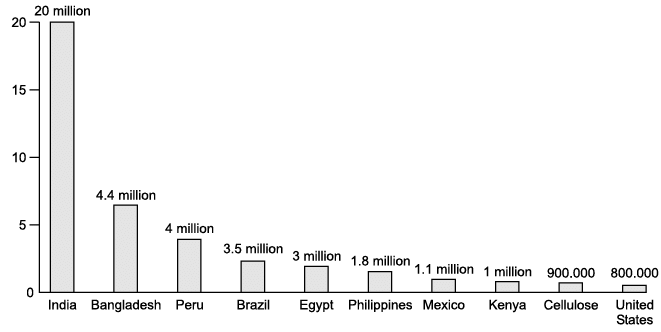
Q. Which country has the highest child labour?

Direction: Child labour refers to any work or activity that deprives children of their childhood. It is a violation of children's rights. This can harm them mentally or physically. It also exposes them to hazardous situations or stop them from going to school. Naman got data on number of child labours (in million) in different country that is given below.
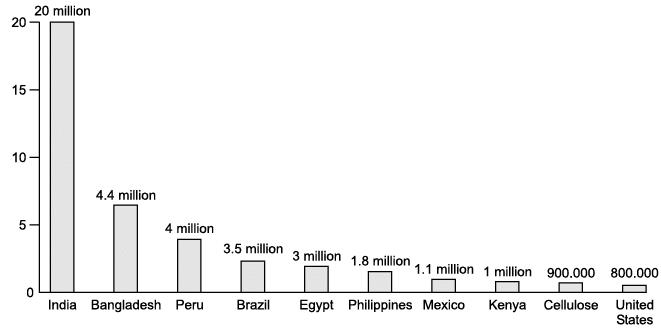
Q. Name the country which has 1 million child labour.

Direction: Child labour refers to any work or activity that deprives children of their childhood. It is a violation of children's rights. This can harm them mentally or physically. It also exposes them to hazardous situations or stop them from going to school. Naman got data on number of child labours (in million) in different country that is given below.
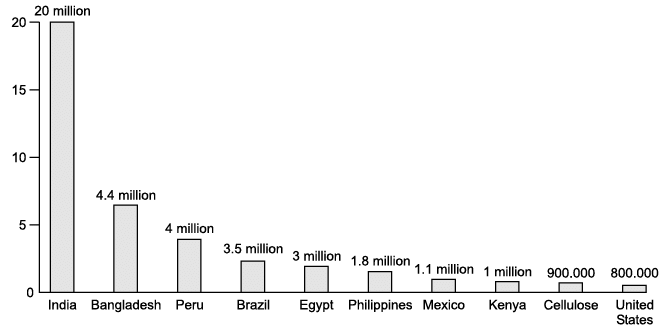
Q. Which country has the lowest child labour?

Direction: Child labour refers to any work or activity that deprives children of their childhood. It is a violation of children's rights. This can harm them mentally or physically. It also exposes them to hazardous situations or stop them from going to school. Naman got data on number of child labours (in million) in different country that is given below.
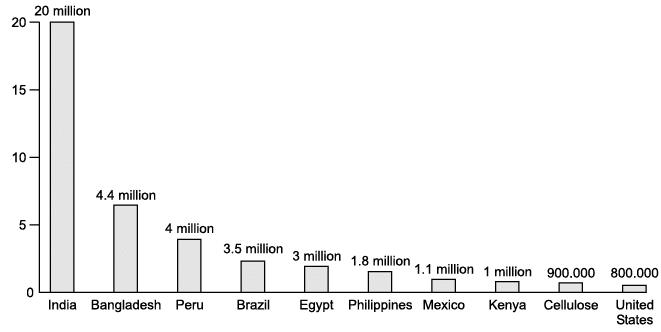
Q. Name the countries having more than 4 million child labour?
Direction: Child labour refers to any work or activity that deprives children of their childhood. It is a violation of children's rights. This can harm them mentally or physically. It also exposes them to hazardous situations or stop them from going to school. Naman got data on number of child labours (in million) in different country that is given below.
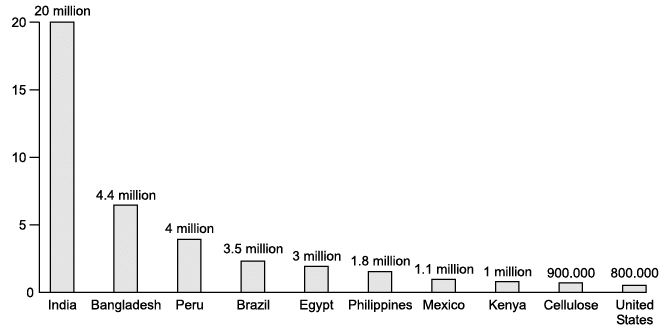
Q. Which country has more than 3 million but less than 6 million child labour?
Direction: Ladli Scheme was launched by the Delhi Government in the year 2008. This scheme helps to make women strong and will empower a girl child. This scheme was started in 2008.
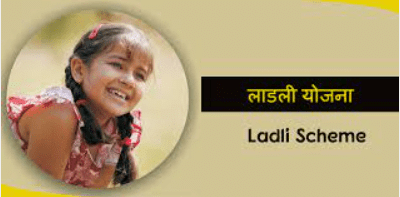
Read the above bar graph and answer the following questions :
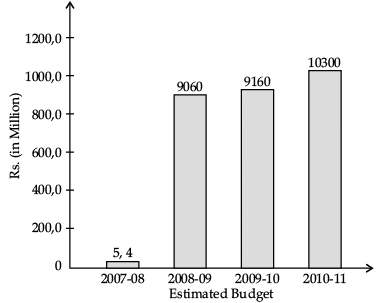
Q. Which statement is incorrect about bar graph?
Direction: Ladli Scheme was launched by the Delhi Government in the year 2008. This scheme helps to make women strong and will empower a girl child. This scheme was started in 2008.
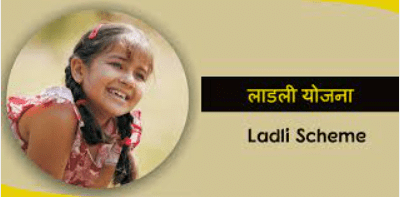
Read the above bar graph and answer the following questions :

Q. What was the difference in budget in the year 2008 - 09 and 2009 - 10?
Direction: Ladli Scheme was launched by the Delhi Government in the year 2008. This scheme helps to make women strong and will empower a girl child. This scheme was started in 2008.
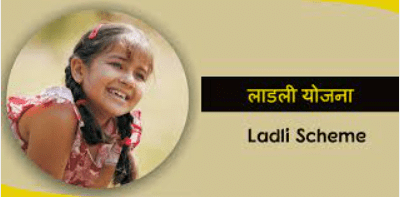
Read the above bar graph and answer the following questions :
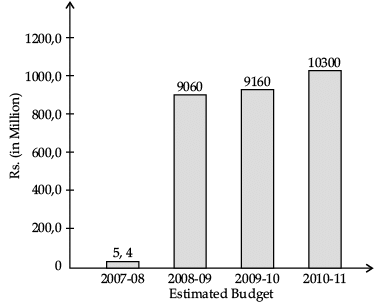
Q. In which year the budget was minimum?
Direction: Ladli Scheme was launched by the Delhi Government in the year 2008. This scheme helps to make women strong and will empower a girl child. This scheme was started in 2008.

Q. Read the above bar graph and answer the following questions :
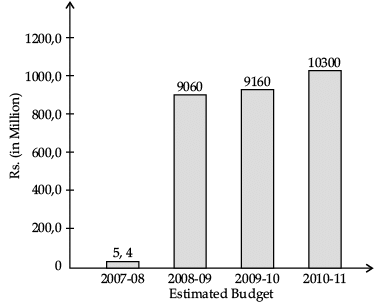
In which year the budget was maximum?
Direction: Ladli Scheme was launched by the Delhi Government in the year 2008. This scheme helps to make women strong and will empower a girl child. This scheme was started in 2008.

Read the above bar graph and answer the following questions :
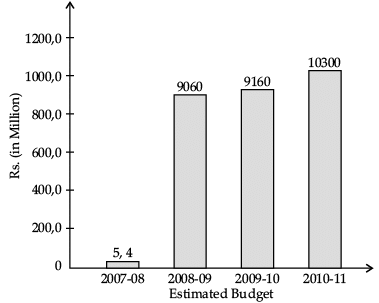
Q. What was the budget in 2010 - 11?
Direction: India's national animal Tiger (which has also been under the radar of the government as its population declined in the country) has witnessed an increase in its population.
A survey was done by the Ministry of Environment, Forests and Climate change, according to which tiger population is on rise at the rate of 6 per cent every year from 2006 and 2018.

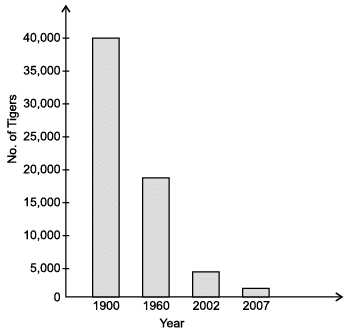
Pranav has found a report on status of tigers in India in last 100 years. He has some queries as follow :
Q. In which year, number of tigers were maximum?
Direction: India's national animal Tiger (which has also been under the radar of the government as its population declined in the country) has witnessed an increase in its population.
A survey was done by the Ministry of Environment, Forests and Climate change, according to which tiger population is on rise at the rate of 6 per cent every year from 2006 and 2018.

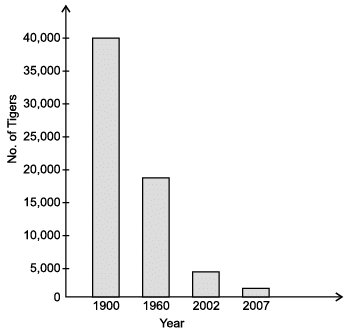
Pranav has found a report on status of tigers in India in last 100 years. He has some queries as follow :
Q. In which year, number of tigers were minimum?
Direction: India's national animal Tiger (which has also been under the radar of the government as its population declined in the country) has witnessed an increase in its population.
A survey was done by the Ministry of Environment, Forests and Climate change, according to which tiger population is on rise at the rate of 6 per cent every year from 2006 and 2018.

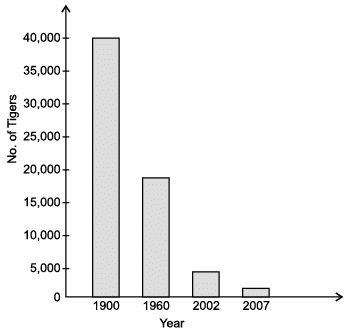
Pranav has found a report on status of tigers in India in last 100 years. He has some queries as follow :
Q. What is the total decline in number of tigers between 1960 to 2007?
Direction: India's national animal Tiger (which has also been under the radar of the government as its population declined in the country) has witnessed an increase in its population.
A survey was done by the Ministry of Environment, Forests and Climate change, according to which tiger population is on rise at the rate of 6 per cent every year from 2006 and 2018.

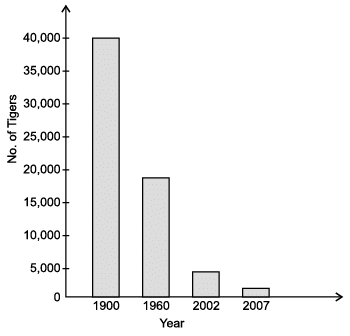
Pranav has found a report on status of tigers in India in last 100 years. He has some queries as follow :
Q. What does this bar graph show?
Direction: India's national animal Tiger (which has also been under the radar of the government as its population declined in the country) has witnessed an increase in its population.
A survey was done by the Ministry of Environment, Forests and Climate change, according to which tiger population is on rise at the rate of 6 per cent every year from 2006 and 2018.

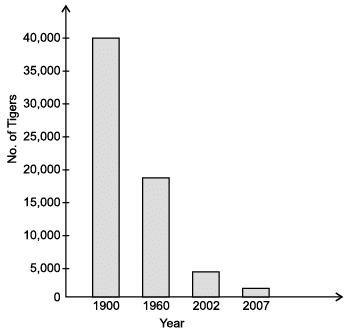
Pranav has found a report on status of tigers in India in last 100 years. He has some queries as follow :
Q. How much decrease in number of tigers was there between 1900 and 1960?














